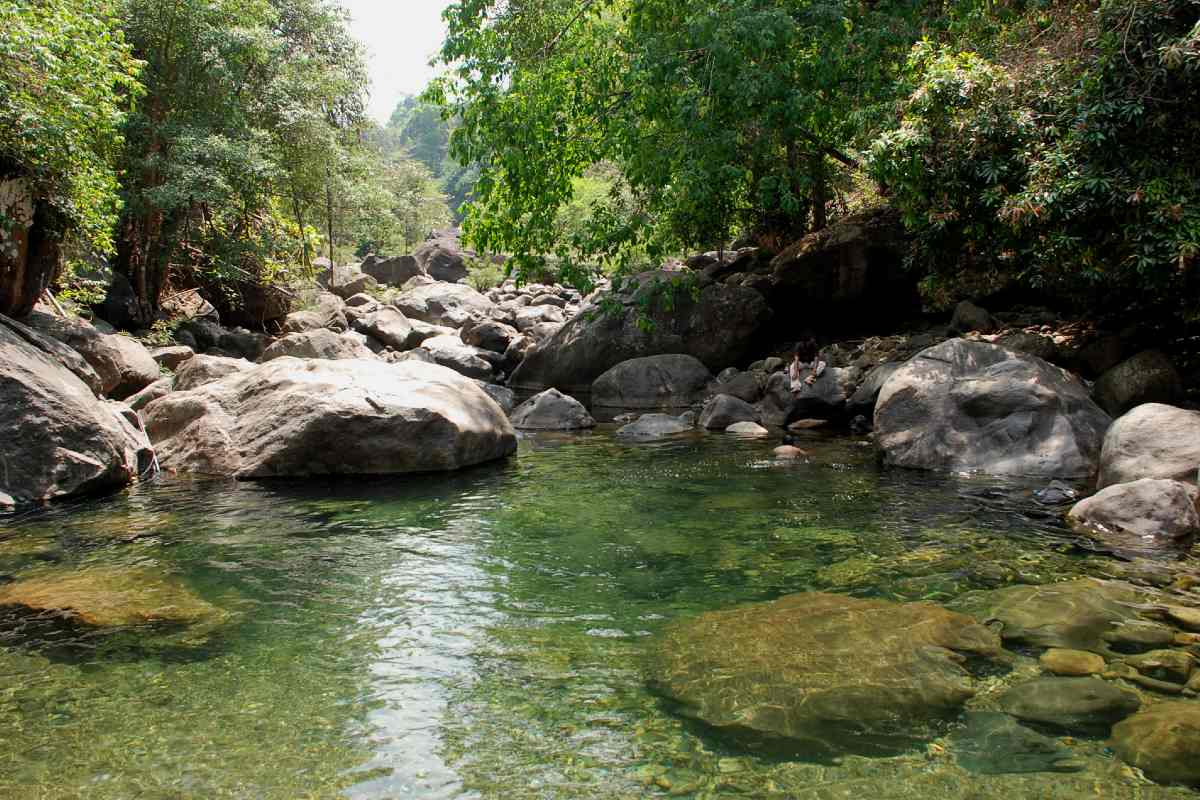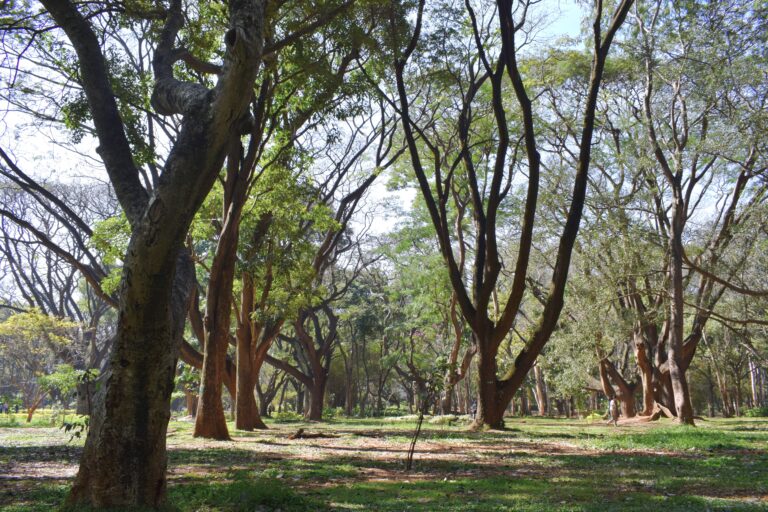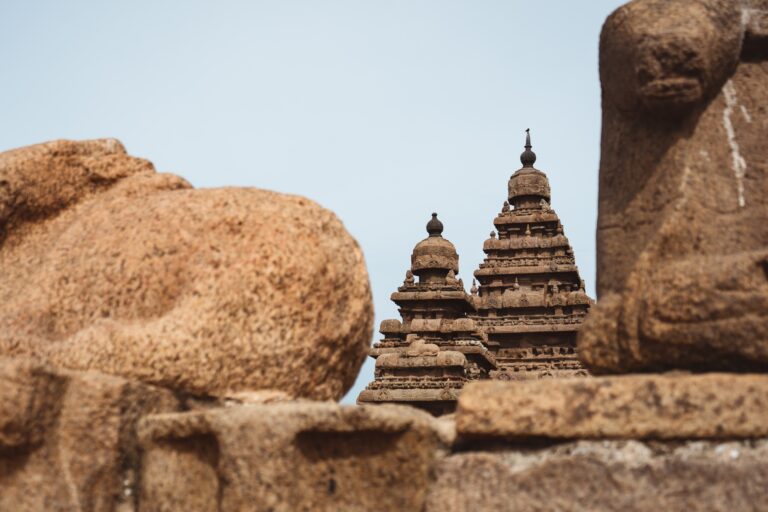Nilambur Tourist Places: Guide to the Top Attractions
Nilambur, a small town in Malappuram district of Kerala, is a hidden gem that is often overlooked by tourists. However, it is home to some of the most breathtaking natural attractions and historical sites that are worth exploring. Nilambur tourist places is known for its lush green forests, teak plantations, and stunning waterfalls that attract visitors from across the globe.

The town has a rich historical significance and was once a major center for teak plantations during the British era. The famous Conolly’s Plot, named after the British teak expert H.V. Conolly, is a must-visit site for anyone interested in the history of the town. The Teak Museum and the Kerala Forest Research Center are also worth visiting for those who want to learn more about the teak plantations and forests of the region.
Key Takeaways
- Nilambur is a small town in Kerala known for its natural beauty and historical significance.
- The town is home to stunning waterfalls, lush green forests, and teak plantations.
- Visitors can explore historical sites such as Conolly’s Plot and the Teak Museum to learn more about the town’s rich history.
Historical Significance

Nilambur has a rich history that dates back to the British era. It was a part of the Madras Presidency during the British rule. The region played a significant role during World War II as it was a major source of teak wood for the British Navy. The British established a teak plantation in Nilambur in the late 19th century.
One of the most significant historical landmarks in Nilambur is Connolly’s Plot, which is one of the oldest teak plantations in the world. It was established by H.V. Conolly, a British teak expert, in the late 19th century. The plantation covers an area of around 2.31 hectares and is home to some of the finest teak trees in the world. The teak wood from Connolly’s Plot is highly valued for its quality and is an essential part of the area’s cultural and historical heritage.
Apart from Connolly’s Plot, there are several other historical landmarks in Nilambur that are worth visiting. The Teak Museum is one such landmark that showcases the history and evolution of the teak industry in the region. The museum has a collection of rare photographs, documents, and artifacts that provide a glimpse into the teak industry’s past.
Overall, Nilambur’s historical significance lies in its rich cultural and historical heritage, which is evident in its numerous landmarks and attractions. Whether it is exploring the teak plantations or visiting the Teak Museum, visitors can immerse themselves in the region’s fascinating history and learn more about its past.
Natural Attractions
Nilambur is blessed with an abundance of natural beauty, including waterfalls, forests, wildlife, flora and fauna, and scenic beauty. Visitors can explore these attractions to experience the region’s diverse ecosystem.
Waterfalls
Nilambur boasts several beautiful waterfalls, including Adyanpara Waterfalls, Valamthode Waterfalls, and Keralamkundu Waterfalls. Adyanpara Waterfalls is a magnificent waterfall nestled in the land of perennial springs and lush green mountains. Valamthode Waterfalls is located in a tribal settlement and is reachable through the Areekode-Mukkam route. Keralamkundu Waterfalls is another stunning waterfall that attracts visitors with its natural beauty.
Forests
Nilambur is home to several forests, including Nedumkayam Rainforest, Central Forest Nursery, and Chaliyar River. Nedumkayam Rainforest is an evergreen forest that is home to a variety of wildlife, including bison, deer, wild cats, macaques, tigers, canines, and blue monkeys. Central Forest Nursery is one of the four forest nurseries located in Valluvassery, close to Nilambur town. Chaliyar River is a beautiful river that flows through the region, offering visitors a chance to explore the lush greenery and natural beauty of the area.
Wildlife
Nilambur is a paradise for wildlife enthusiasts, with its diverse ecosystem offering visitors a chance to see a variety of animals and birds. Visitors can explore the Parambikulam Wildlife Sanctuary to see animals like elephants, tigers, and deer. They can also visit the Elembalai Hill to see animals like bisons, elephants, dogs, blue monkeys, deer, and wild cats.
Flora and Fauna
Nilambur is home to a variety of flora and fauna, including several insect species, moths, and butterflies. Visitors can explore the region’s natural beauty and greenery to see a variety of plant species, making it a perfect destination for plant lovers.
Scenic Beauty
Nilambur is known for its scenic beauty, offering visitors breathtaking views of the Nilgiri Hills, hanging bridges, and wooden rest houses. Visitors can explore the Teak Museum to learn about the region’s teak plantations and the Kerala Forest Research Center to learn about the region’s flora and fauna. They can also visit the Chaliya River to enjoy a picnic with family and friends.
In conclusion, Nilambur’s natural attractions offer visitors a chance to experience the region’s diverse ecosystem and natural beauty. Visitors can explore these attractions to enjoy weekend excursions, picnics, and other activities while experiencing the region’s culture and heritage.
Cultural Significance

Nilambur is a town with a rich cultural heritage that can be traced back to the Chola Naikas era. The town has a significant tribal settlement, and the Kumbharan tribe is known for their pottery work. The Kumbham Handicraft Project, located in Nilambur, promotes the traditional ceramic village and the pottery work of the Kumbharan tribe.
The town is also known for its Malabar culture, which is a blend of various cultures, including that of the Arabs, Portuguese, and British. This cultural diversity is reflected in the town’s architecture, cuisine, and art forms.
One of the significant tourist attractions in Nilambur is the Teak Museum, which showcases the history and significance of teak in the region. The museum also has a section dedicated to the cultural heritage of Nilambur, which includes exhibits on the town’s art forms, such as the potters and their pottery work.
In addition to pottery work, Nilambur is also known for its handloom industry. The town has several handloom weaving centers that produce traditional clothing, including sarees, dhotis, and mundus.
Overall, Nilambur’s cultural significance is a blend of its rich history, diverse cultural influences, and traditional art forms. Visitors to the town can experience this unique cultural heritage through its museums, handicraft projects, and local markets.
Teak Plantations

Nilambur is famous for its teak plantations, which are among the oldest in the world. The most famous of these is Conolly’s Plot, which is spread across a vast area of 2.31 hectares. It was created between 1842 and 1844 and is renowned as the world’s first teak plantation. The plantation was named after its creator, H.V. Conolly, the collector of Malabar district at the time.
The teak plantation is a perfect destination for tourists seeking tranquillity and a touch of nature. The place was established in the mid-19th century to oversee the operations of the forest department. It is located in Vedapuram near the Government Timber Depot.
In addition to Conolly’s Plot, Nilambur is also home to Kannimara Teak, the largest and oldest living teak tree in the world. The tree is over 450 years old and stands at a height of 48.5 meters. It is considered a natural wonder and attracts tourists from all over the world.
Nilambur is also home to India’s first Teak Museum, which serves as a huge attraction in the town. The museum showcases the history and evolution of the teak industry in India. It also displays various teak products and artifacts, including furniture, carvings, and handicrafts.
The Nilambur Teak Preserve is another popular attraction in the town. It is home to a variety of teak trees and other flora and fauna. The preserve is spread across an area of 234 hectares and is a must-visit for nature lovers.
Overall, Nilambur’s teak plantations and attractions offer a unique glimpse into the history and importance of teak in India. Visitors can enjoy the natural beauty of the plantations while learning about the industry’s evolution through the ages.
Travel Information
Nilambur is a small town located in the Malappuram district of Kerala, India. It is well-connected to major cities like Kozhikode, Ooty, Palakkad, and Calicut by road and rail. The nearest airport is Calicut International Airport, which is approximately 45 km away from Nilambur.
For those traveling by train, Nilambur Road Railway Station is the nearest railway station, located about 4 km from the town center. From there, one can hire a taxi or take a bus to reach Nilambur.
The town is also well-connected by road, with regular bus services from nearby cities like Kozhikode and Palakkad. Private taxis and rental cars are also available for those who prefer a more comfortable and convenient mode of travel.
When it comes to accommodation, Nilambur offers a range of options to suit different budgets and preferences. There are several budget-friendly hotels, guesthouses, and homestays in the town center, as well as luxury resorts and villas for those who want to indulge in a more lavish stay.
Overall, Nilambur is a great destination for those looking to escape the hustle and bustle of city life and explore the natural beauty of Kerala. With its lush green forests, scenic waterfalls, and rich wildlife, Nilambur promises a unique and unforgettable travel experience.
Frequently Asked Questions

What are some popular tourist places near Nilambur?
There are several popular tourist places near Nilambur that are worth visiting. Some of these include the Kozhippara Waterfalls, the Thirunelli Temple, the Thusharagiri Waterfalls, and the Wayanad Wildlife Sanctuary.
What are some good resorts to stay at in Nilambur?
There are several good resorts to stay at in Nilambur. Some of the top-rated resorts include the Rainforest Resort, the Vythiri Village Resort, and the Green Gates Hotel.
Are there any waterfalls to visit in Nilambur?
Yes, there are several waterfalls to visit in Nilambur. Some of the most popular ones include the Adyanpara Waterfalls, the Kozhippara Waterfalls, and the Vellamthode Waterfalls.
What is the history of Nilambur Kovilakam?
Nilambur Kovilakam is a historic palace located in Nilambur. It was the residence of the local rulers of Nilambur and is known for its exquisite architecture and design.
What are some recommended places to stay in Nilambur?
Some of the recommended places to stay in Nilambur include the Rainforest Resort, the Vythiri Village Resort, and the Green Gates Hotel. These are all highly-rated and offer comfortable accommodations.
What are some activities to do in Nilambur besides visiting tourist places?
Besides visiting tourist places, there are several activities to do in Nilambur. Some of these include taking a walk through the local markets, exploring the nearby forests, and trying out the local cuisine. Additionally, visitors can also go on a tea plantation tour or take a boat ride on the local rivers.







